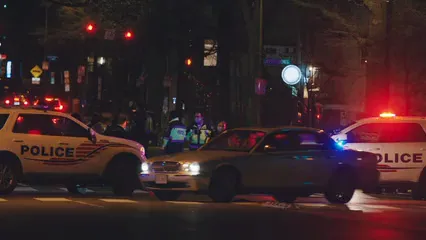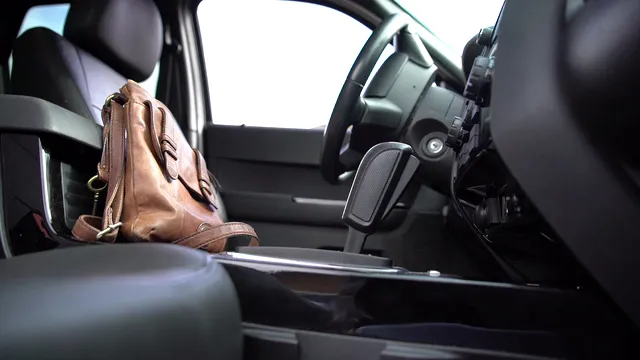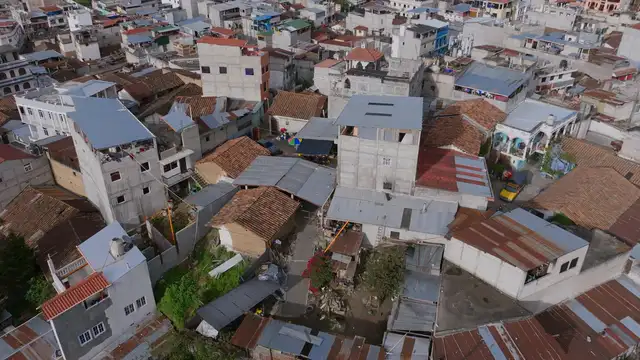Introduction
Myrtle Beach, South Carolina, is a well-loved tourist hotspot. With its sandy shores, lively boardwalk, and thrilling attractions, it draws millions each year. However, beneath this sunny facade lies a more complex reality. The crime statistics in Myrtle Beach can be shocking. They often contrast sharply with the city’s inviting image.
Understanding these statistics is crucial for both residents and visitors. Acknowledging the reality of crime can empower individuals to make informed decisions. After all, no one wants their beach vacation to turn into a crime scene!
This article will break down Myrtle Beach’s crime statistics. We will compare the city’s crime rates to those of South Carolina and the nation. Additionally, we will analyze trends in both violent and property crimes. By the end, readers will gain a clearer picture of safety in Myrtle Beach.

Understanding Crime in Myrtle Beach
Overview of Crime Statistics
Myrtle Beach is notorious for its high crime rates. The overall crime rate stands at 77 per 1,000 residents. This figure is staggering when compared to the state’s average. In fact, more than 98% of communities in South Carolina have lower crime rates. The chance of becoming a victim here is about one in thirteen. Yikes!
When we look at national averages, Myrtle Beach ranks among the top cities for crime. It’s like a dangerous game of musical chairs—there are simply not enough safe spots!

Breakdown of Violent Crime Rates
Violent crime includes offenses like murder, assault, and robbery. In Myrtle Beach, there were 386 reported violent crimes last year, translating to a rate of 10.05 per 1,000 residents. The risk of falling victim to violent crime is one in a hundred.
Breaking it down further reveals the nature of these crimes. There were six murders, 68 rapes, 65 robberies, and a whopping 247 assaults. The trends over recent years show fluctuations, but the numbers remain unsettling.
If you’re intrigued by the psychological aspects of crime, consider diving into Mindhunter: Inside the FBI’s Elite Serial Crime Unit. This gripping read delves into the minds of criminals and the agents who pursue them, making it a perfect companion for those who want to understand the darker sides of human nature.

Breakdown of Property Crime Rates
Property crime encompasses theft, burglary, and motor vehicle theft. Myrtle Beach reported a staggering 2,554 property crimes, leading to a rate of 66.48 per 1,000 residents. That’s one in fifteen people potentially facing property crime!
Burglary accounted for 218 incidents, while theft made up a whopping 2,139. Motor vehicle theft added another 197 to the mix. Analysis of year-over-year trends shows fluctuations, but the overall picture remains grim.
For those looking to stay safe, having the right tools is essential. A Personal Safety Alarm can provide peace of mind. This handy gadget can alert others in case of an emergency, ensuring that you’re never truly alone in a tough situation.
In summary, crime statistics in Myrtle Beach paint a troubling picture. Understanding these figures is vital for anyone considering a visit or a move to this coastal city. Awareness is the key to safety, so let’s keep our eyes peeled and stay informed!

Factors Influencing Crime Rates in Myrtle Beach
Socioeconomic Factors
Myrtle Beach is a tourist paradise, but it comes with some challenges. One major factor influencing crime rates is poverty. The poverty rate in Myrtle Beach stands at a staggering 22.4%. This is notably higher than the national average of 15.1%. It’s no surprise that poverty often correlates with crime. When individuals struggle to meet basic needs, desperation can lead to criminal behavior.
Now, let’s sprinkle in some tourism. Myrtle Beach attracts millions each year. Tourists flock to enjoy the sun and fun, but this influx can also lead to increased crime rates. Criminals may see tourists as easy targets, especially in crowded areas. Scams, theft, and other petty crimes often spike during peak tourist seasons.
Housing affordability also plays a role. The median home price in Myrtle Beach is around $237,200. While this is lower than many coastal cities, it can still be a burden for many residents. High housing costs can push people into financial distress, leading to increased crime. If you can’t afford a roof over your head, some may turn to illegal means to make ends meet.
To help with emergency preparedness, check out the 5-in-1 Survival Kit. This versatile kit includes essential tools for any emergency, ensuring that you’re always ready for the unexpected.

Law Enforcement and Community Initiatives
The Myrtle Beach Police Department takes crime seriously. Their strategies focus on community engagement and proactive policing. They aim to build trust between officers and the community. After all, a friendly neighborhood cop can do wonders for safety!
Community policing is a key initiative here. Officers are not just enforcers; they’re also neighbors. Local police engage with residents in various ways. They attend community events, host safety meetings, and even participate in local festivals. This approach fosters communication and helps residents feel more secure.
But it doesn’t stop there! Myrtle Beach has seen successful crime prevention programs. For example, neighborhood watch groups empower citizens to keep an eye on their surroundings. These initiatives encourage residents to report suspicious activity. The more eyes on the street, the safer the community becomes.
If you’re curious about the psychology behind crime, check out The Anatomy of Violence: The Biological Roots of Crime. This book offers a fascinating look at the biological factors that contribute to criminal behavior, making it a must-read for anyone interested in the topic.
In conclusion, socioeconomic factors and law enforcement strategies play critical roles in shaping crime rates in Myrtle Beach. Understanding these elements helps residents and visitors alike navigate the complexities of safety in this beautiful coastal city. Awareness is key, and knowledge can help make informed decisions about living in or visiting Myrtle Beach.

Crime Risk Analytics
Crime risk analytics are like your neighborhood’s crystal ball, revealing hidden dangers before they knock. By analyzing crime data, these tools assess the likelihood of criminal activity in specific areas. They use historical crime reports, demographic data, and local law enforcement insights to predict future incidents. Think of it as a safety GPS, guiding residents and visitors to make informed choices about where to live or visit.
Data sources play a crucial role in crime statistics. Local law enforcement agencies, with their troves of information, provide the backbone of these analytics. Their reports, collected from over 18,000 agencies nationwide, ensure the data is accurate and up-to-date. This collaboration is vital. It’s not just about knowing where crime is happening; it’s about understanding why. Factors like socioeconomic conditions and local policies can heavily influence crime rates. So, when you see those stats, remember—they’re not just numbers; they’re stories waiting to be told.

Crime Map Analysis
Crime maps are valuable tools for both residents and tourists. They visually represent where crime happens, helping people navigate their surroundings. Picture it like a treasure map, but instead of “X” marking the spot for buried gold, it shows hotspots for crime. By consulting these maps, individuals can make smarter decisions, like avoiding certain streets at night.
These maps reveal areas of concern but also highlight safer neighborhoods. For example, if a map shows high crime rates in tourist-heavy zones, visitors can adjust their plans. Conversely, they can seek out neighborhoods with lower crime rates, ensuring a more pleasant stay. Understanding these patterns helps foster a sense of community vigilance, encouraging residents to look out for one another. Remember, knowledge is power, and in this case, it can keep you safer while enjoying all Myrtle Beach has to offer.

Safest Neighborhoods and Communities in Myrtle Beach
Overview of Safe Neighborhoods
Myrtle Beach boasts several neighborhoods where safety reigns supreme. Let’s take a look at some of the safest spots in this vibrant coastal city.
- Osprey Cove: Known for its family-friendly atmosphere, Osprey Cove offers a peaceful environment with low crime rates. Residents enjoy a tight-knit community feel, making it a great place for families.
- Peachtree Estates: This neighborhood stands out due to its friendly neighbors and safe streets. Many families choose to settle here, drawn by the sense of security and community.
- Tuscany Village / Members Club: The charm of Tuscany Village lies in its beautifully maintained properties and low crime statistics. It’s a perfect example of a neighborhood where safety and aesthetics go hand-in-hand.
- Carolina Forest: A popular choice for families and retirees alike, Carolina Forest features well-planned communities with ample amenities. The community’s active participation in safety initiatives keeps crime rates low.
- Bridgecreek / Lawsons Landing: A serene area with a reputation for being safe and welcoming. Residents here appreciate the quiet surroundings and the commitment to community safety.
- Pine Island: This neighborhood is a hidden gem known for its tranquility and safety. It’s an ideal spot for those seeking a peaceful lifestyle away from the hustle and bustle.
- Carnaby Loop / Alvina Way: With its well-lit streets and engaged community, this area boasts a strong neighborhood watch program, making it one of the safer places to live.
- Waterford Plantation / Windsor Green: Residents here take pride in their neighborhood. The active homeowners association works tirelessly to maintain safety and community spirit.
- Island Green / Myrtle Beach Golf and Yacht Club: Known for its beautiful landscapes and recreational facilities, this neighborhood emphasizes safety, making it a favored spot for golfers and families alike.
- The Lakes / Brighton Woods: This community feels like a retreat with its scenic views and friendly atmosphere. Residents enjoy a sense of belonging, contributing to the area’s low crime rates.
Factors that contribute to safety in these neighborhoods include community engagement, active neighborhood watch programs, and the presence of local law enforcement. Residents often participate in safety initiatives, fostering a supportive environment. Additionally, well-maintained properties and organized community events enhance the overall sense of security. Living in one of these safe neighborhoods allows residents to enjoy all the fun Myrtle Beach has to offer without the worry of crime lurking around the corner.

For those who enjoy crime stories, The Stranger by Albert Camus is a classic that delves into existential themes and the human condition. It’s a gripping read that will keep you on the edge of your seat!
Comparison with Nearby Communities
When it comes to crime rates, Myrtle Beach isn’t exactly winning any awards. Nearby communities like North Myrtle Beach and Conway provide an intriguing contrast. In fact, North Myrtle Beach has a reputation for being a safer haven, with lower crime rates. Residents there can often breathe a little easier than those in Myrtle Beach.
North Myrtle Beach boasts a crime rate significantly below its neighboring counterpart. Its focus on community engagement and proactive policing has paid off. Crime here tends to be less prevalent, making it a popular choice for families and retirees.
Conway, another nearby community, also shows promising statistics. With a lower overall crime rate, it’s often viewed as a desirable location for potential residents. This city emphasizes community safety, which helps maintain a sense of security among its inhabitants.
If you’re interested in understanding the broader implications of crime and society, consider reading The New Jim Crow: Mass Incarceration in the Age of Colorblindness. This thought-provoking book explores the intersections of race and the criminal justice system, offering insights that are essential for understanding today’s society.
For those considering a move, these comparisons are vital. The implications are clear: If safety is a priority, looking at communities like North Myrtle Beach and Conway may be wise. Potential residents should weigh these factors heavily before packing their bags for the sunny shores of Myrtle Beach.

Conclusion
Myrtle Beach presents a complex picture when it comes to crime statistics. With an overall crime rate of 77 per 1,000 residents, it’s undeniably high. The staggering statistic of one in thirteen residents likely becoming a victim is both shocking and eye-opening.
When comparing Myrtle Beach to South Carolina and national averages, the disparities become even more pronounced. While Myrtle Beach grapples with crime, neighboring communities like North Myrtle Beach and Conway offer reprieve with their lower rates. This stark difference should serve as a wake-up call for potential residents and visitors alike.
Understanding crime rates is essential for anyone considering a move or a visit. Knowledge is power, and being informed can help individuals make better decisions about their safety. Myrtle Beach authorities are aware of the challenges and are actively working to improve safety measures. Community engagement, neighborhood watch programs, and increased police visibility are all steps in the right direction.
If you’re looking for a gripping read that explores crime and its implications, consider The Crime Book: Big Ideas Simply Explained. This book simplifies complex ideas surrounding crime, making it accessible for anyone looking to understand the issue better.
In conclusion, while Myrtle Beach is a beautiful destination, it’s crucial to stay vigilant and informed. The ongoing efforts to enhance safety will hopefully lead to a brighter future for this coastal city. As the city evolves, so too will its crime statistics. Keeping an eye on these changes will be essential for anyone looking to enjoy all that Myrtle Beach has to offer without the worry of crime lurking around the corner. Stay informed, stay safe, and enjoy the beach!

FAQs
Is Myrtle Beach a safe place to live?
Myrtle Beach has a reputation for high crime rates. In fact, the overall crime rate stands at 77 per 1,000 residents. That’s equivalent to a 1 in 13 chance of becoming a victim. Yikes! Despite these numbers, many locals feel relatively secure. About 30% of residents believe crime is minimal. However, 70% express apprehension, especially about walking alone at night. So, while some enjoy the coastal charm, others remain cautious. Community sentiment varies widely based on personal experiences and neighborhoods.
What types of crime are most common in Myrtle Beach?
Myrtle Beach faces its fair share of crime issues. The most prevalent crimes include property theft, burglary, and violent offenses like assault. Property crimes dominate the statistics, with 2,554 reported incidents last year. This includes 2,139 thefts and 218 burglaries. Violent crimes, while fewer in number, still present a concern. With 386 reported incidents, the breakdown reveals six murders, 68 rapes, and 65 robberies. These figures highlight the need for awareness and caution among residents and visitors alike.
How do crime rates in Myrtle Beach compare to other cities?
When comparing Myrtle Beach to other cities, the numbers are alarming. Myrtle Beach has a violent crime rate of 10.05 per 1,000 residents, significantly higher than the national average of 4.0. In terms of property crime, Myrtle Beach’s rate stands at 66.48 per 1,000 residents, which is nearly three times the national average. It’s clear that this coastal city grapples with safety challenges. Meanwhile, neighboring communities like North Myrtle Beach and Conway boast much lower crime rates. This stark contrast leaves many potential residents reconsidering their options.
What measures are being taken to reduce crime?
Local authorities are not sitting idly by. The Myrtle Beach Police Department is actively working to improve safety. They implement community policing strategies, focusing on building relationships with residents. This involves attending local events and engaging in open dialogues. Additionally, neighborhood watch programs have gained traction, empowering citizens to monitor their surroundings. These initiatives encourage residents to report suspicious activities, fostering a sense of collective responsibility. Through these efforts, Myrtle Beach aims to create a safer environment for everyone.
How can residents stay informed about crime in their area?
Staying informed is crucial for safety. Residents can utilize crime maps, which illustrate hot spots and trends in their neighborhoods. These maps provide valuable insights into crime patterns. Additionally, subscribing to local police department updates can keep residents in the loop. Neighborhood watch programs also serve as excellent resources, fostering communication among neighbors. Participating in community meetings allows locals to voice concerns and gain insights from law enforcement. Knowledge is power, and being aware helps residents make safer choices.
For a deeper understanding of crime statistics, consider exploring Fremont crime statistics.
Please let us know what you think about our content by leaving a comment down below!
Thank you for reading till here 🙂
All images from Pexels




